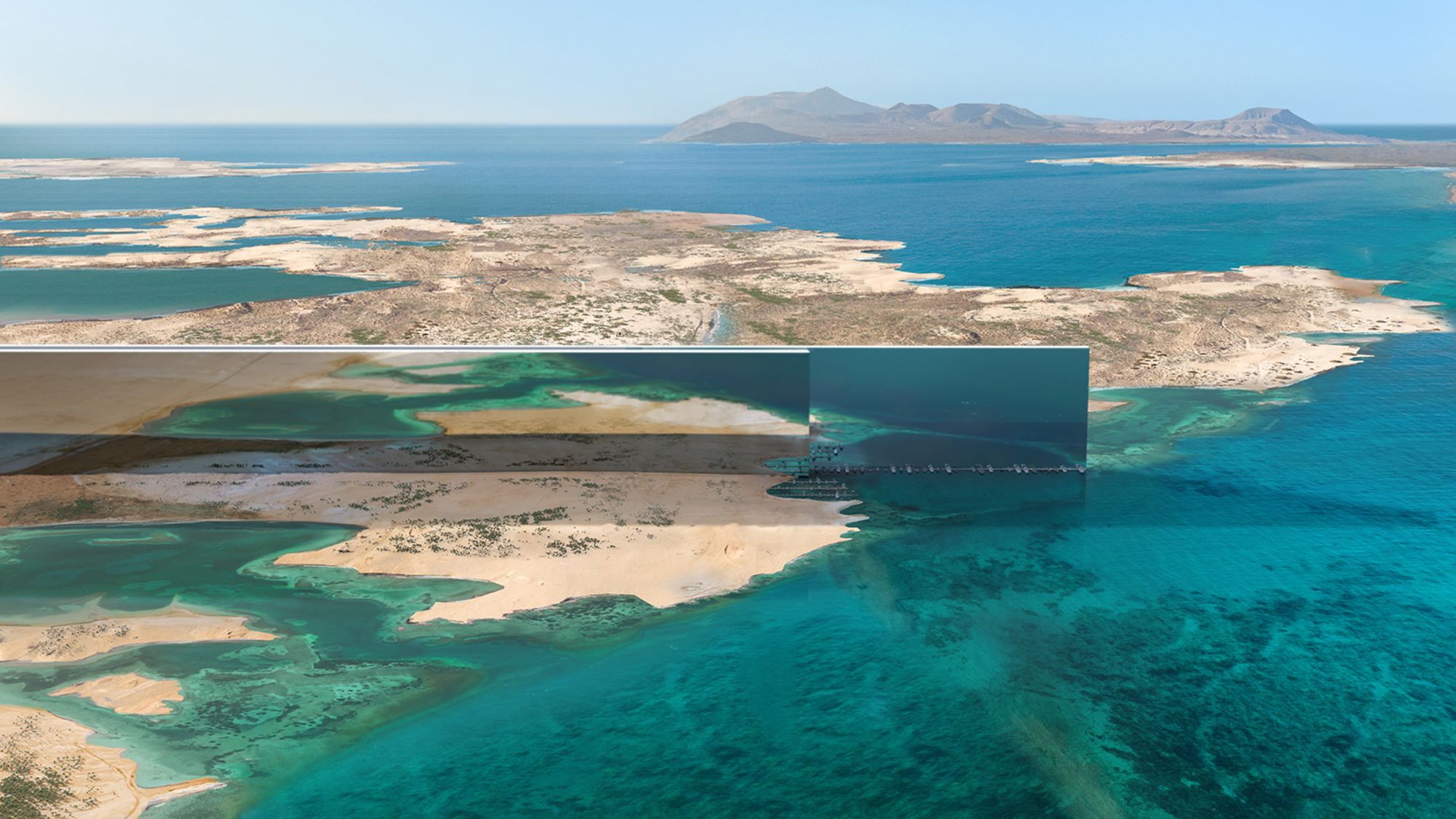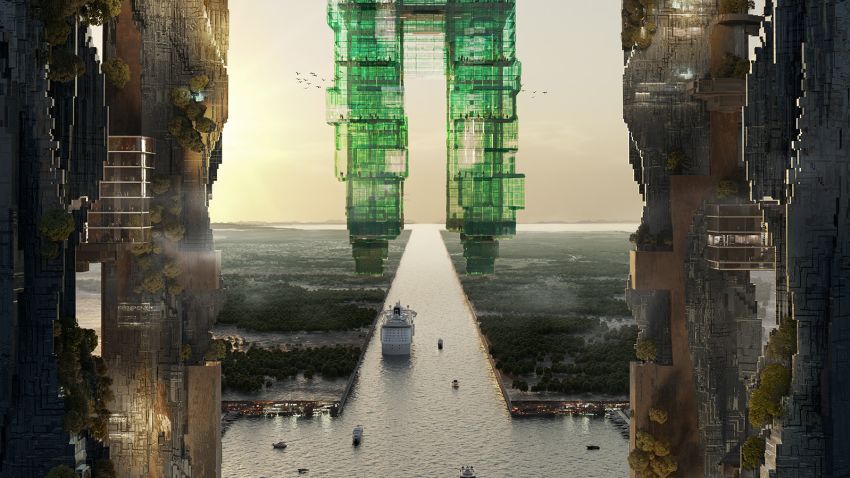Saudi Arabia has unveiled designs for its ambitious urban project “The Line,” touted as a one-building city in the desert which will stretch over 106 miles and ultimately house 9 million people.
Part of the Neom project, a grandiose scheme years from completion, the proposed futuristic city will be located in the northwest of the Gulf country, near the Red Sea, according to an announcement by the kingdom’s Crown Prince Mohammed bin Salman.
The Line is a proposed 200-meter wide (656 feet) building acting as a vertical city, designed to sit 500 meters (1,640 feet) above sea level. It will span 34 square kilometers (13 square miles), according to the press release.
Though details are scarce, those behind the design claim The Line will run entirely on renewable energy, with no roads, cars or emissions. High-speed rail will connect sections of The Line, the press release adds.
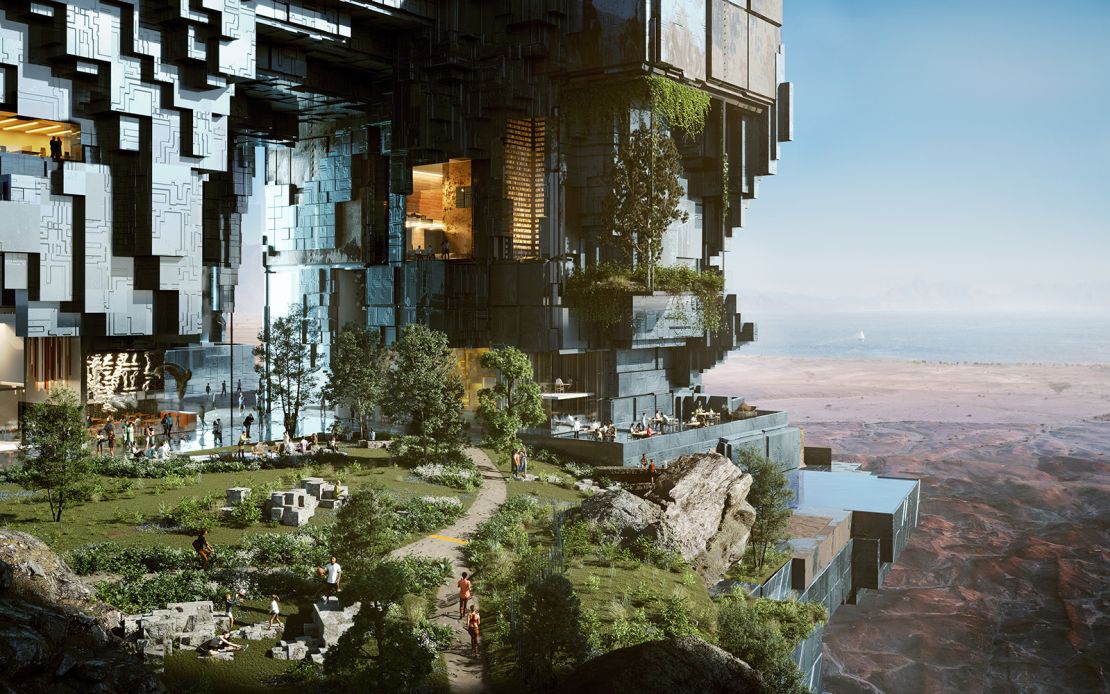
Critics have cast doubt on whether the project is technologically feasible, while others have described the vision unveiled in a flashy promo video as “dystopian.”
The Line forms part of a Saudi rebrand plan — coined Vision 2030 — to rival its Gulf neighbors such as Dubai and Abu Dhabi as travel hotspots and reshape the kingdom’s economy. Aiming to reach 100 million annual visitors by the close of the decade, it is hoped the surge would boost the local economy by billions of dollars.
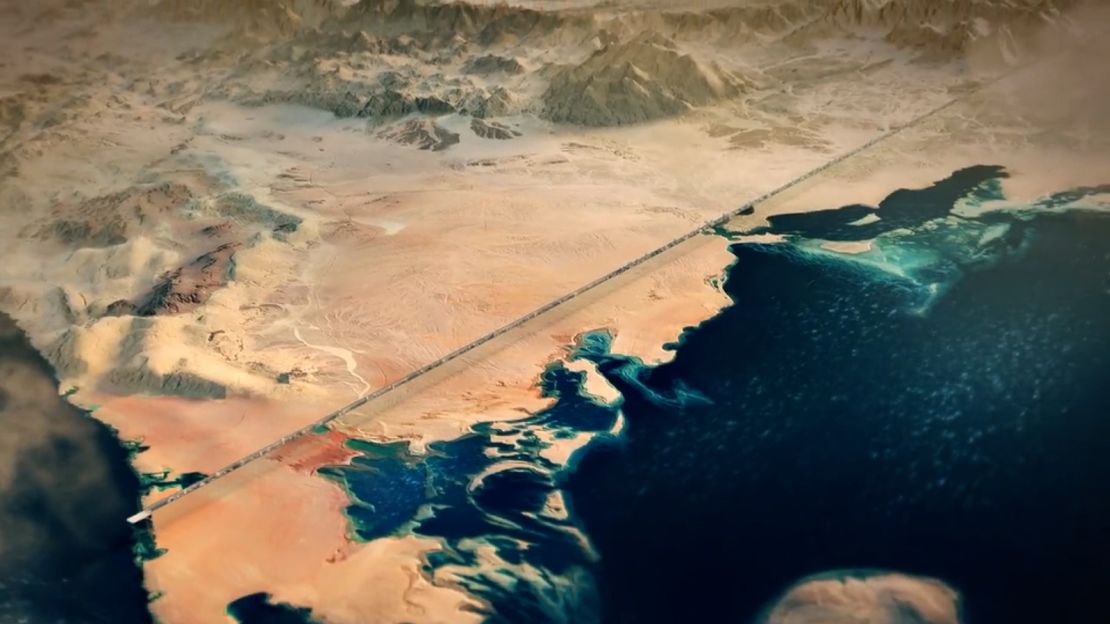
However, Saudi Arabia continues to be plagued by criticism over its human rights record. In March, 81 men were executed in the biggest mass execution in decades. Meanwhile, bin Salman approved the operation to capture or kill the Saudi journalist Jamal Khashoggi, according to a US intelligence report. The crown prince has denied that he ordered Khashoggi’s murder but has said that he bears responsibility, amid widespread international condemnation. “This was a heinous crime,” bin Salman said in an interview with CBS in 2019. “But I take full responsibility as a leader in Saudi Arabia, especially since it was committed by individuals working for the Saudi government.”
And while the Saudi government has introduced periodic labor reforms, their limited nature and lax enforcement have seen exploitative and dangerous practices continue for the migrant worker population.
According to Human Rights Watch, millions of migrant workers fill mostly manual, clerical, and service jobs in Saudi Arabia — more than 80% of the private sector workforce. The group has been highly critical of Saudi Arabia’s visa sponsorship system, known as kafala.
“Over the past decade, other Gulf states have also embarked on reform of their notorious kafala systems, with most introducing more significant reforms than those of the Saudi authorities,” stated a Human Rights Watch report on the country’s most recent labor reforms in March 2021.
“However, many of the same violations against migrant workers’ rights persist across the region, most commonly unpaid and delayed wages and passport confiscations.”
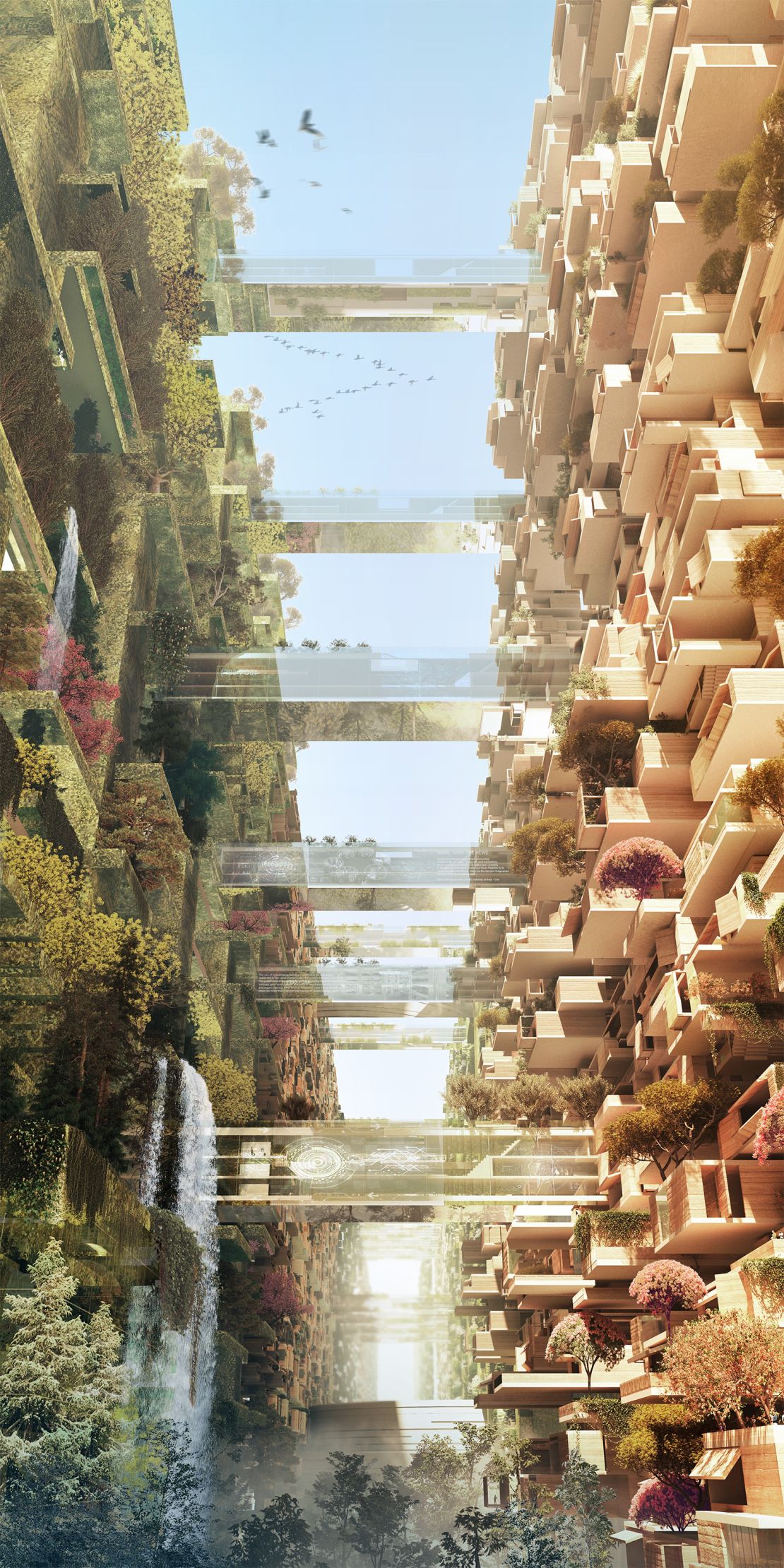
Designs for the mirrored skyscraper mark the latest development in Saudi Arabia’s Neom project, a mega-development spanning three countries which began construction in 2019.
The metropolis will purportedly be powered by clean energy and run with the aid of artificial intelligence. Robot maids, flying taxis, and a giant artificial moon headline as features of a promised tech paradise.
“The designs … will challenge the traditional flat, horizontal cities and create a model for nature preservation and enhanced human livability. The Line will tackle the challenges facing humanity in urban life today and will shine a light on alternative ways to live,” bin Salman said in the press release.
The Neom project is backed by $500 billion from the Saudi government and the Saudi Arabian Public investment Fund (PIF) – a sovereign wealth fund chaired by bin Salman – as well as local and international investors.
Initially scheduled for 2025, delays have pushed back Neom’s completion date by a further five years, but the crown prince insists the ambitious project remains on track.
Cautionary tales
Cautionary tales exist in the form of various failed ‘super-projects’ across the globe in recent history.
In neighboring Dubai in 2009, the estimated $38 billion Nakheel Harbour and Tower development was canceled six years on from its proposal following the global economic slump.
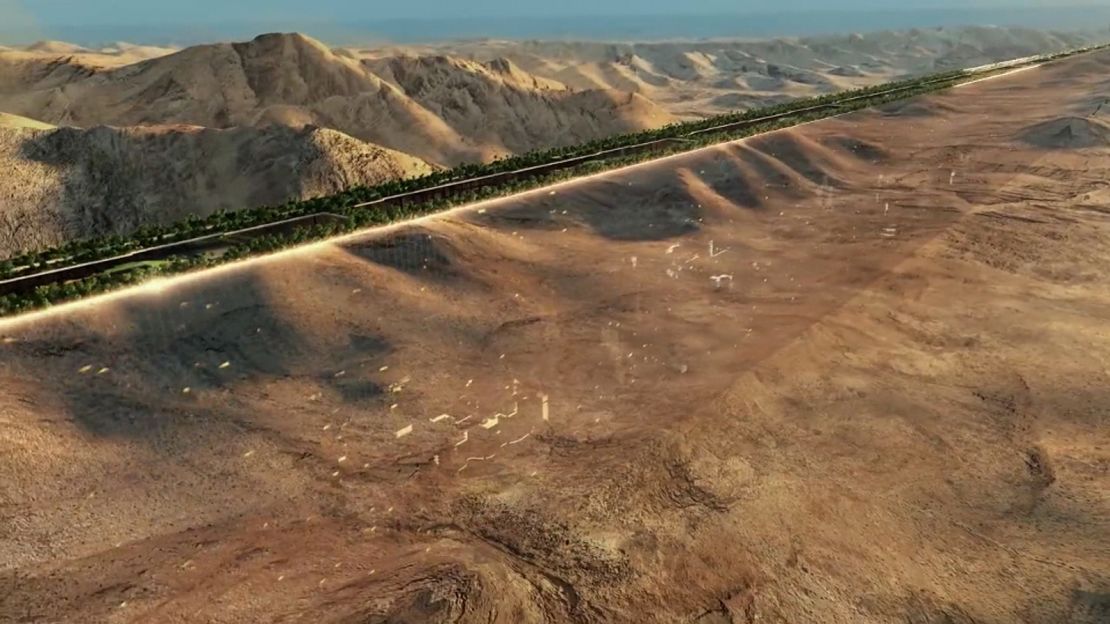
The Chinese government had hoped the Inner Mongolian city of Kangbashi would one day house more than 1 million residents after it pumped more than $1 billion of funding into its construction, but by 2016 it was home to just 10% of the projected figure. Similar ghost town fates befell other costly projects in the Yujiapu Financial District in Tianjin, China, and Naypyidaw, the capital of Myanmar.
North Korea wished for the 330-meter (1,083-foot) Ryugyong Hotel to be the tallest hotel in the world upon its planned opening in the capital of Pyongyang in 1989. Since nicknamed the “Hotel of Doom,” construction was never completed and, as of 2019, it was the world’s tallest unoccupied building.
